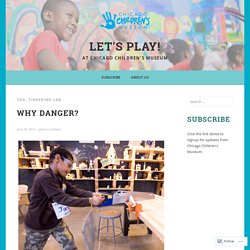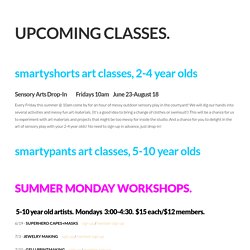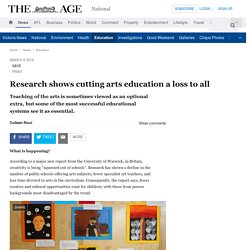

TInkering Lab – Let's Play! Exposing children to danger may seem counterintuitive, but when done right, and with the support of caring adults, it is ultimately the best preparation we can give them for becoming resilient, thoughtful and capable human beings.

Kids just don’t have enough “good danger” in their lives these days. No, really…Hear us out! Think back to your childhood… What are your strongest play memories? Often, when we at Chicago Children’s Museum ask adults how they played as children, the things they recall most vividly were a bit risky. They climbed trees—or rooftops—and played in alleys. From these experiences, they learned. Encountering risky, seemingly dangerous situations provide children some of their greatest and most important learning opportunities. As Gever Tulley, author of Fifty Dangerous Things You Should Let Your Kids Do, says, “While there are aspects of danger in virtually everything we do, the trick is to learn how mastery actually minimizes danger.”
Tinkering at preschool. Gever Tulley would be proud of us.

Today we tinkered up a storm and discovered that taking things apart is just as much fun as building things. Things took an unexpected twist when the children wanted a way of displaying all the wonderful bits and bobs they removed from the old video recorders. Memory flash to Teacher Tom's amazing junk collages. I grabbed an old piece of board and PVC glue (which we added colour to) and some glitter to add that oh so important touch of pizzazz. As each spring or screw or widget was removed, it was glued to the board. Science Projects for Kids. If you’re looking for science projects for kids, I have a mega list for you that’s 100% kid-tested.

Note: This post contains affiliate links My children and I have worked our way through a LOT of science projects over the past few years, so I compiled them into one easy-to-find spot. If you’d like more ideas like this, you’ll love my best-selling book, TinkerLab: A Hands-on Guide for Little Inventors. Most of these science projects and experiments will be engaging for children ages 3 and up, although I did MANY of them with my 2-year olds. Enjoy! These projects fall into five categories: PhysicsChemistryEngineeringTechnologyBiologyGeology How to Make Popcorn on a Cob Magical Plastic Bag Experiment: Learn about the magic of polymers as you poke pencils through a water-filled bag…and notice that not a drop of water leaks through the holes!
Floating Egg Experiment Magnet Magic: Move Paper Clips through Water with Magnets Is it Magnetic? Soap Making with Kids How to Set up a Magic Potion Lab. Creative Experiments for Mini Makers. The Factory! – A Place to Meet and Make. Upcoming Classes. Smartyshorts art classes, 2-4 year olds Sensory Arts Drop-In Fridays 10am June 23-August 18 Every Friday this summer @ 10am come by for an hour of messy outdoor sensory play in the courtyard!

We will dig our hands into several activities and messy fun art materials. (It’s a good idea to bring a change of clothes or swimsuit!) This will be a chance for us to experiment with art materials and projects that might be too messy for inside the studio. Smartypants art classes, 5-10 year olds 5-10 year old artists.
Arts and creativity 'squeezed out of schools' Image copyright Thinkstock Creativity and the arts are being squeezed out of schools, a major report has said.

Cultural experiences and opportunities were being closed off to youngsters, especially those from poor backgrounds, the Warwick University report said. There had been a significant decline in the number of state schools offering arts subjects taught by specialist teachers, it added. The government said the arts was a key part of the national curriculum. Etsy: total annual merchandise sales volume 2015. School Art Programs: Should They Be Saved? - Law Street (TM) Art education can benefit students in different ways, including improving student performance across the whole curriculum.

But art programs in schools are often the first to be cut, if budget cuts are necessary. As a result, many students are missing out on the benefits of art classes. So, is it important to provide art education in schools? Read on to learn about art programs’ benefits and the issues with funding them for public school students.
What is the current state of art education in American schools? Research shows cutting arts education a loss to all. What is happening?

According to a major new report from the University of Warwick, in Britain, creativity is being "squeezed out of schools". Research has shown a decline in the number of public schools offering arts subjects; fewer specialist art teachers, and less time devoted to arts in the curriculum. Consequently, the report says, fewer creative and cultural opportunities exist for children; with those from poorer backgrounds most disadvantaged by the trend. The Warwick report, Enriching Britain: Culture, Creativity and Growth, details the results of a 12-month study involving a special commission of cultural leaders and academic experts.
It highlights the concern that the current educational model is failing to meet the needs of creative and cultural industries, and that the "broader needs for innovation and growth" in Britain are being ignored. Why is it happening? Others say funding cuts and the focus on standardised testing have been instrumental in edging out the arts. Links. National Art Education Association. Hobby, Arts, and Crafts Stores - Industry Data and Analysis. The following guide to industry information, research, and analysis provides sources for industry trends and statistics, financial ratios, salary surveys, and more.
